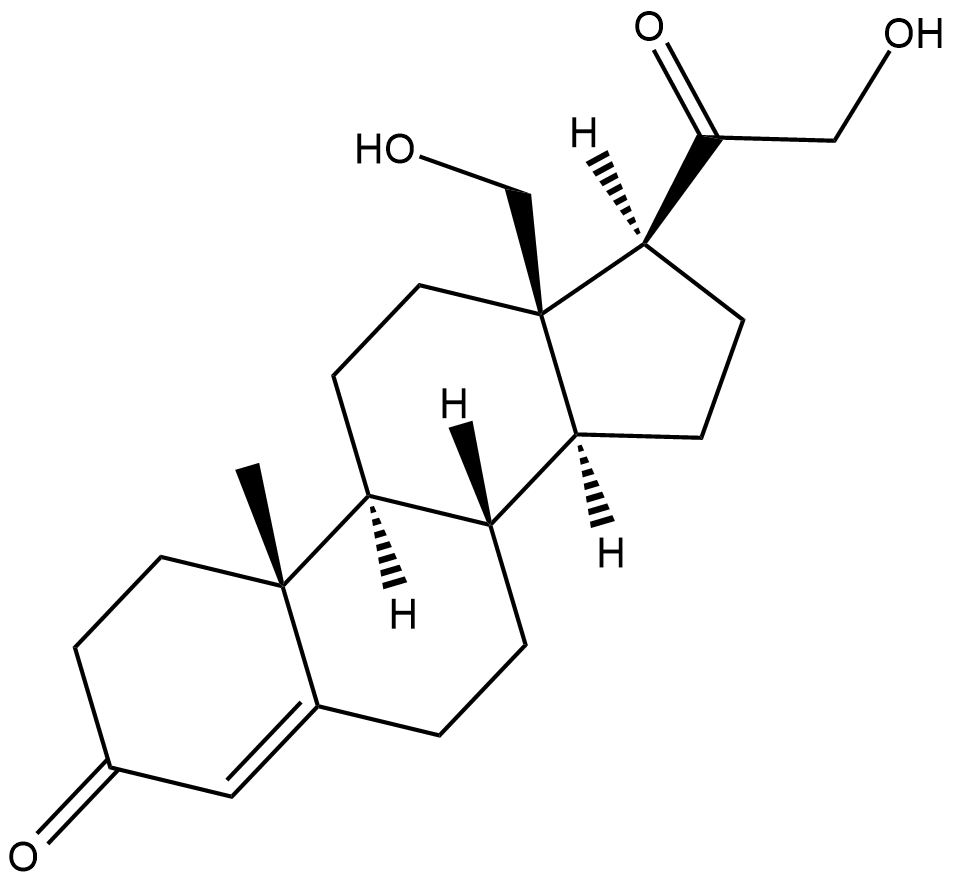18-hydroxy-11-deoxy Corticosterone (Synonyms: 18-Hydroxydeoxycorticosterone, 18-OH-DOC) |
| Catalog No.GC18635 |
18-hydroxy-11-deoxy Corticosterone (18-OH-DOC) is a mineralocorticoid secreted by the zona fasciculata of the adrenal gland.
Products are for research use only. Not for human use. We do not sell to patients.

Cas No.: 379-68-0
Sample solution is provided at 25 µL, 10mM.
18-hydroxy-11-deoxy Corticosterone (18-OH-DOC) is a mineralocorticoid secreted by the zona fasciculata of the adrenal gland. Its biosynthesis is regulated by adrenocorticotropic hormone as well as angiotensin II , which increases 18-OH-DOC production in isolated human adrenal glomerulosa cells. 18-OH-DOC can be formed via conversion of 11-deoxy corticosterone in human SK-MEL188 melanoma cells. 18-OH-DOC is an intermediate in the metabolism of progesterone and can be converted to aldosterone by the capsular portion of rat adrenal glands. Continuous infusion of 18-OH-DOC (200 μg/rat per day) increases systolic blood pressure in uninephrectomized saline-drinking rats. Plasma levels of 18-OH-DOC are elevated in a db/db mouse model of type 2 diabetes.
References:
[1].Braley, L.M., and Williams, G.H. The effect of angiotensin II and saralasin on 18-hydroxy-ll-deoxycorticosterone production by isolated human adrenal glomerulosa cells J. Clin. Endocrinol. Metab. 49(4), 600-603 (1979).
[2].Carroll, J.C., Komanicky, P., and Melby, J.C. The relationship between plasma 18-hydroxy-11-deoxycorticosterone levels and production of hypertension in the rat J. Steroid Biochem. 14(10), 989-995 (1981).
[3].Müller, J. The conversion of 18-hydroxycorticosterone and 18-hydroxy-11-deoxycorticosterone to aldosterone by rat adrenal tissue: Evidence for an alternative biosynthetic pathway J. Steroid Biochem. 13(3), 245-251 (1980).
[4].Slominski, A., Gomez-Sanchez, C.E., Foecking, M.F., et al. Metabolism of progesterone to DOC, corticosterone and 18OHDOC in cultured human melanoma cells FEBS Lett. 455(3), 364-366 (1999).
[5]. Giesbertz, P., Padberg, I., Rein, D., et al. Metabolite profiling in plasma and tissues of ob/ob and db/db mice identifies novel markers of obesity and type 2 diabetes Diabetologia 58(9), 2133-2143 (2015).
Average Rating: 5 (Based on Reviews and 10 reference(s) in Google Scholar.)
GLPBIO products are for RESEARCH USE ONLY. Please make sure your review or question is research based.
Required fields are marked with *




















